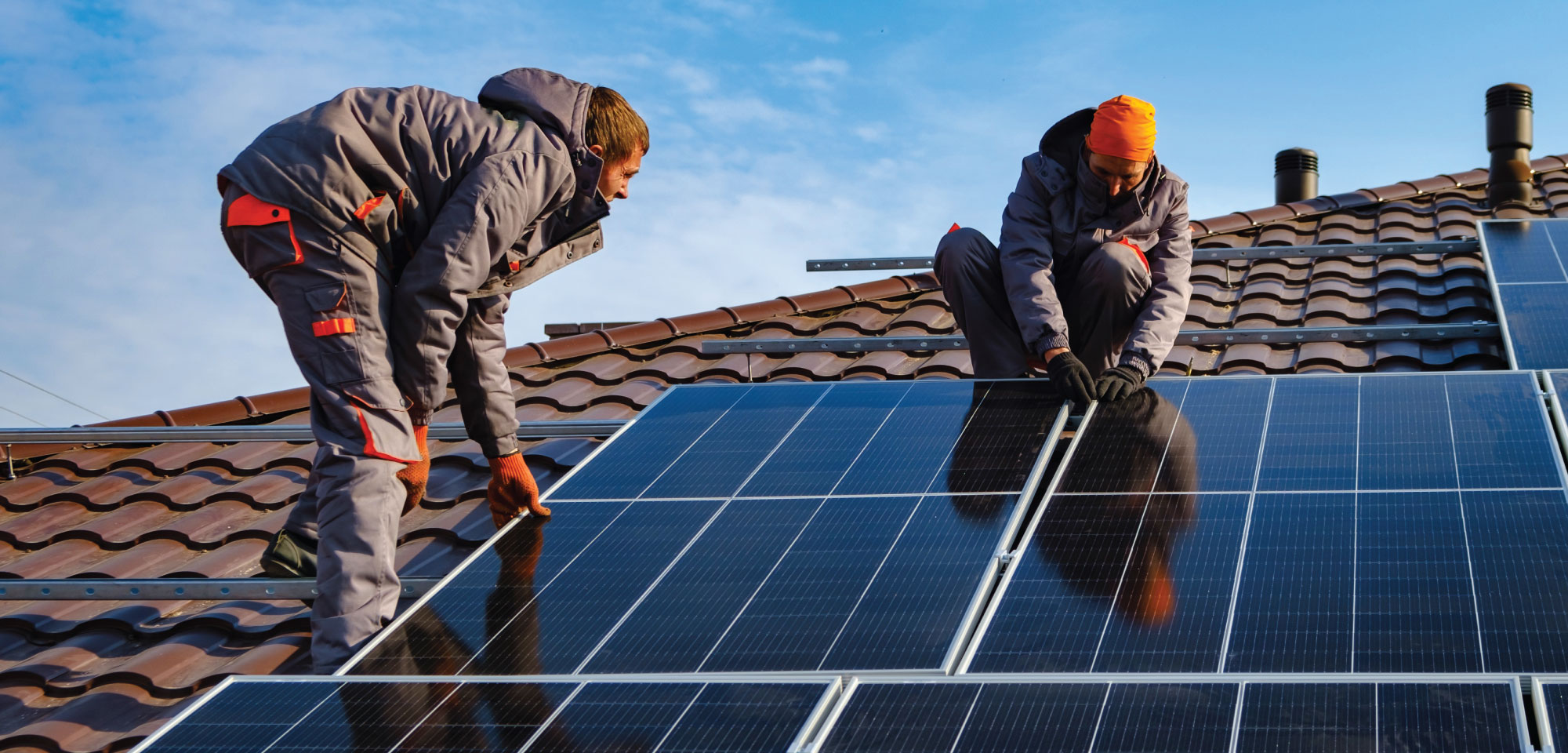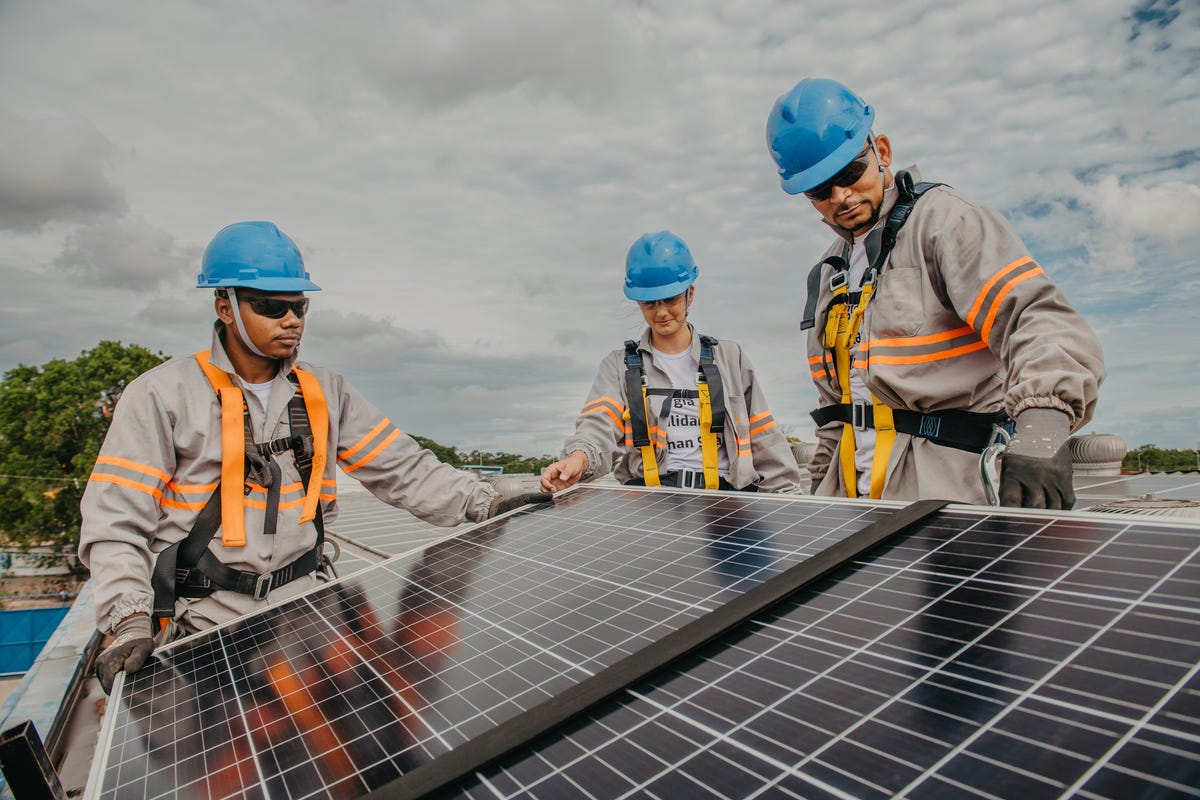4 Easy Facts About Solar Panel Company Shown
4 Easy Facts About Solar Panel Company Shown
Blog Article
Virginia Off-Grid Solar Systems: Lumina Solar Specializes In Providing Advanced Photovoltaic Solutions For Residences And Services
History and Establishing
Have you ever wondered how a photovoltaic panel company springs from a simple stimulate of inspiration into a powerhouse of renewable energy? It typically starts with a vision-- one sustained by a blend of development, determination, and a pinch of serendipity. The journey of numerous solar companies mirrors the development of the innovation itself: from bulky, inefficient panels to sleek, high-efficiency marvels utilizing the sun's bounty.
The Early Days
In the late 20th century, when solar energy was still a specific niche principle, leaders planted seeds for what would end up being an international movement. Think of a small workshop filled with curious engineers, relentlessly try out photovoltaic cells. Their enthusiasm was palpable, often driven by a desire to combat environment modification and lower dependence on fossil fuels.
One such anecdote has to do with a creator who, influenced by a camping journey, realized that even in remote locations, the sun might power vital devices. This simple observation more info stimulated a company's objective to equalize access to clean energy.
Founding Principles

- Development: Continually pressing the limits of solar innovation to improve efficiency and sturdiness.
- Sustainability: Committing to environment-friendly production and lowering carbon footprints.
- Availability: Making renewable resource services cost effective and useful for everyday users.
Milestones in Development
| Year | Secret Occasion |
|---|---|
| 1985 | Company established in a little garage, concentrating on research and advancement. |
| 1995 | Industrial solar panel product launched, acquiring local attention. |
| 2005 | Broadened to global markets, embracing global renewable resource objectives. |
| 2015 | Introduced cutting-edge solar panel technology with improved energy conversion. |
Isn't it fascinating how these incremental actions, often overlooked, shape the energy landscape today? The photovoltaic panel company story is not simply about innovation; it's about a relentless mission for a brighter, cleaner future.

Innovations in Solar Panel Technologies
Ever discovered how some solar panels gleam brighter and last longer? It's not magic; it's the science of photovoltaic effectiveness. Modern solar panel companies invest greatly in technologies like bifacial cells, which record sunlight from both sides, improving energy harvest without broadening roofing space. Have you ever wondered why some panels carry out much better on cloudy days? That's due to advances in thin-film solar technology, which prospers under diffused light conditions.
Item Variations Customized to Special Needs
One size never fits all. Photovoltaic panel service providers now provide:
- Monocrystalline panels for optimum effectiveness and sleek aesthetics, ideal for space-constrained rooftops.
- Polycrystalline panels, which provide an economical alternative without compromising excessive output.
- Building-integrated photovoltaics (BIPV), combining solar tech perfectly into architectural components like windows and exteriors.
Selecting the best product isn't practically upfront expense; it has to do with matching your environment, energy objectives, and long-term savings. For example, homes shaded by trees need panels that master low-light situations, something numerous neglect until energy costs climb all of a sudden.
Technical Tips for Ideal Selection
- Evaluate the temperature coefficient-- lower values indicate panels lose less performance on hot days.
- Look for panels with improved anti-reflective coatings to optimize light absorption.
- Consider the panel's guarantee not simply for defects, but for guaranteed power output over years.
- Don't undervalue the significance of the inverter innovation combined with the panels; it can make or break your system's performance.
Beyond Panels: Emerging Trends
Envision photovoltaic panels that change their angle automatically to go after the sun-- tracking systems are ending up being more accessible, increasing yield considerably. Or solar tiles that blend undetectably into your roofline, transforming your home into a quiet, self-sufficient power generator. These developments are improving what a solar panel company provides-- not just products, however incorporated energy options.
Market Existence and Global Operations
Ever question why some photovoltaic panel business appear to sprout up in every corner of the world while others hardly make a ripple? The difference lies not simply in technology but in mastering the art of navigating diverse markets. Expanding worldwide resembles planting seeds in different climates-- you must understand each environment's special conditions to flourish.
Take, for instance, the complex dance of logistics and supply chain management. Delivering panels midway across the world isn't practically distance; it's about timing, custom-mades, tariffs, and adapting to regional need fluctuations. A company with robust international operations prepares for these variables, guaranteeing panels arrive on schedule without pumping up costs. This foresight is no little accomplishment and often separates industry leaders from followers.
Key Strategies for Expanding Market Presence
- Localized manufacturing: Developing production centers near target audience reduces shipping delays and import intricacies.
- Strategic collaborations: Working together with local companies accelerates market penetration and builds trust.
- Adaptive product design: Customizing photovoltaic panel tech to weather, sun intensity, and infrastructure subtleties improves efficiency and acceptance.
What about the human aspect? Solar panel business running worldwide must reconcile cultural differences and regulatory subtleties without losing sight of their core mission. For example, what works in a sun-drenched desert might fail in a humid coastal region. In some cases, the most innovative solution is simply listening-- soaking up local insights to refine technology and method.
Professionals often advise a phased rollout rather than a shotgun expansion. Why run the risk of overextension when determined development constructs sustainable momentum? Scaling carefully suggests balancing ambition with functional resilience - Residential Solar Panels Virginia. In the race for sustainable energy supremacy, persistence can be as important as speed.
Environmental Impact and Sustainability Practices
When solar panels first emerged, many assumed they brought no ecological baggage. The reality is more nuanced. The production of photovoltaic cells includes rare earth metals and energy-intensive processes, which can leave a sizable carbon footprint before the panels even reach rooftops. The real environmental expense depends greatly on the sustainability practices used by the solar panel business throughout the lifecycle of their products.
How typically do we stop briefly to consider what takes place to solar panels at the end of their helpful life? Unlike batteries or electronic devices, solar panels can last 25-30 years, however disposal and recycling paths stay underdeveloped in lots of areas. A company devoted to lowering environmental damage will have a robust strategy for recycling photovoltaic products, restoring important silicon, glass, and metals to avoid landfill build-up.
Secret Sustainability Strategies
- Using low-impact production strategies that reduce water and energy intake.
- Implementing closed-loop systems to recycle production waste back into new panels.
- Engaging in transparent supply chain audits to ensure ethical sourcing of raw products.
- Creating panels for easier disassembly to assist future recycling efforts.
It's worth noting that some solar companies have actually originated innovative techniques, such as integrating naturally degradable elements or utilizing less poisonous chemicals throughout fabrication. This not just minimizes ecological stress but also sets a precedent for the market. The question stays: can the solar market genuinely pivot towards a circular economy model without compromising performance or price?
Professional Tips for Assessing Sustainability
- Ask about the business's commitment to carbon-neutral manufacturing and whether they balance out emissions.
- Investigate if they partner with licensed recycling facilities devoted to photovoltaic panel waste.
- Look for openness reports detailing environmental effects and sustainability goals.
- Think about the longevity and guarantee of panels as an indirect measure of resource performance.
In the end, opting for solar energy ought to suggest more than just slashing electrical power bills; it has to do with nurturing a future where energy is collected responsibly and waste is attentively handled. Photovoltaic panel business that embrace this viewpoint not only illuminate homes but likewise cast a brighter light on sustainable development.
Report this page